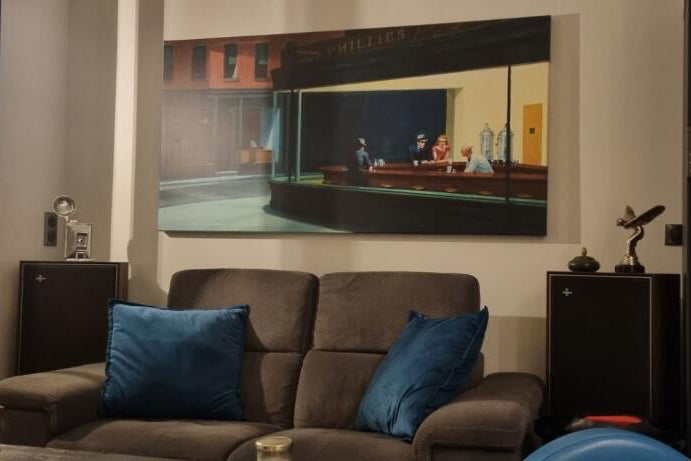Art print | Two actors in a scene from the play of Soga - Kubo Shunman


View from behind

Frame (optional)
"Two actors in a scene from the Soga play" by Kubo Shunman is a true invitation to immerse oneself in the rich and fascinating world of 18th-century Japanese theater. This art print, faithful to the original, captures the very essence of ukiyo-e culture, an artistic movement that celebrates the fleeting beauty of everyday life. Through scenes of theater, portraits of beautiful women, and landscapes, Kubo Shunman manages to transcend time and offer a poetic vision of his era. By contemplating this work, the observer is transported to the heart of a vibrant theatrical performance, where the emotions and gestures of the actors are magnified by the delicacy of the lines and the richness of the colors.
Style and uniqueness of the work
The composition of "Two actors in a scene from the Soga play" stands out for its harmonious balance and expressive dynamism. The characters, dressed in sumptuous costumes, are depicted in a moment of dramatic tension, capturing the viewer's attention. The meticulous details of the costumes, as well as the facial expressions of the actors, testify to Kubo Shunman's exceptional craftsmanship. The nuances of colors, ranging from vivid shades to more subtle tones, confer a depth and rare emotional intensity to the work. The woodblock printing technique used by the artist brings each element of the scene to life, making the work visually rich. This attention to detail and harmony of colors makes this piece an emblematic example of ukiyo-e aesthetics, where every line is designed to evoke an emotional reaction in the viewer.
The artist and his influence
Kubo Shunman, an emblematic figure of the ukiyo-e movement, left his mark on his era through his innovative approach and distinctive style. Born at the end of the 18th century, he was influenced by the great masters of his time, while developing an artistic signature that is uniquely his own. Shunman is recognized for his portraits of kabuki actors, those theater performers who embodied legendary and historical characters. His work is not limited solely to the depiction of theatrical scenes.

Matte finish

View from behind

Frame (optional)
"Two actors in a scene from the Soga play" by Kubo Shunman is a true invitation to immerse oneself in the rich and fascinating world of 18th-century Japanese theater. This art print, faithful to the original, captures the very essence of ukiyo-e culture, an artistic movement that celebrates the fleeting beauty of everyday life. Through scenes of theater, portraits of beautiful women, and landscapes, Kubo Shunman manages to transcend time and offer a poetic vision of his era. By contemplating this work, the observer is transported to the heart of a vibrant theatrical performance, where the emotions and gestures of the actors are magnified by the delicacy of the lines and the richness of the colors.
Style and uniqueness of the work
The composition of "Two actors in a scene from the Soga play" stands out for its harmonious balance and expressive dynamism. The characters, dressed in sumptuous costumes, are depicted in a moment of dramatic tension, capturing the viewer's attention. The meticulous details of the costumes, as well as the facial expressions of the actors, testify to Kubo Shunman's exceptional craftsmanship. The nuances of colors, ranging from vivid shades to more subtle tones, confer a depth and rare emotional intensity to the work. The woodblock printing technique used by the artist brings each element of the scene to life, making the work visually rich. This attention to detail and harmony of colors makes this piece an emblematic example of ukiyo-e aesthetics, where every line is designed to evoke an emotional reaction in the viewer.
The artist and his influence
Kubo Shunman, an emblematic figure of the ukiyo-e movement, left his mark on his era through his innovative approach and distinctive style. Born at the end of the 18th century, he was influenced by the great masters of his time, while developing an artistic signature that is uniquely his own. Shunman is recognized for his portraits of kabuki actors, those theater performers who embodied legendary and historical characters. His work is not limited solely to the depiction of theatrical scenes.










